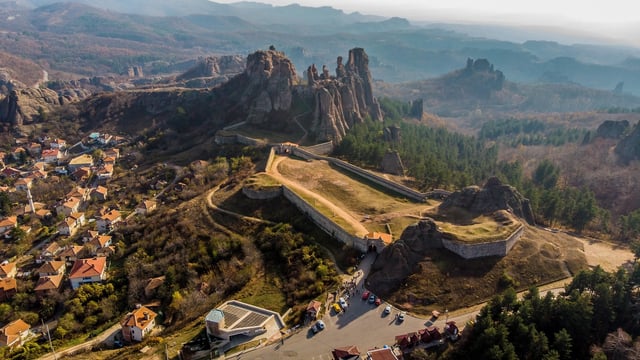North West Bulgaria
Art, History & Archaeology Sites & Museums
Archaeology & History Sites in North West Bulgaria
Baba Vida Medieval Fortress
The Babini Vidini Kuli Fortress, also called Baba Vida, is said to be the best preserved Medieval castle in Bulgaria. Construction began in the 10th century on the site of the Roman castell Bononia. There are two concentric curtain walls and nine towers – three of which have survived at the original height. The exceptional preservation and its location on the south bank of the Danube River makes this a popular attraction. And one that is frequently used in film production. During the summer the castle hosts performances and concerts.

Belogradchik Fortress
The Belogradchik Fortress is found among large, natural sandstone formations. The first fort was constructed by the Romans, and probably only served surveillance functions. It was not until the 14th century that the walls were extended to make this one of the the most strategic and substantial strongholds in the region. Since then the fort has played key defensive roles in various battles between the Bulgarians and Ottomans. Changes made in the 19th century reflect the engineer’s Italian and French origins.

Castra Martis
In the present-day town of Kula is the Roman fortress Castra Martis. The fort was built to provide military protection to the road that went over the nearby Vrashka Chuka Pass in the western Balkan mountains. A typical late Roman quadriburgium, this is a four sided, square structure that measures 40 by 40 metres with thick-walled round towers on the corners, each about 12.5 metres in diameter. Remains of other Roman structures have been found nearby, including a bathhouse and a military camp

Magura Cave
The karst topography of north west Bulgaria has numerous limestone caves, many of which are open to the public. One of these, the Magura Cave, was occupied from at least the end of the Palaeolithic through to the Bronze Age. Archaeologists have recorded over 750 individual paintings, some thought to be as old as 8,000 years. The cave is open to visitors throughout the year, but if you want to see the prehistoric paintings you will need to take a guided tour. Magura Cave is on the UNESCO Tentative list of World Heritage Sites.







